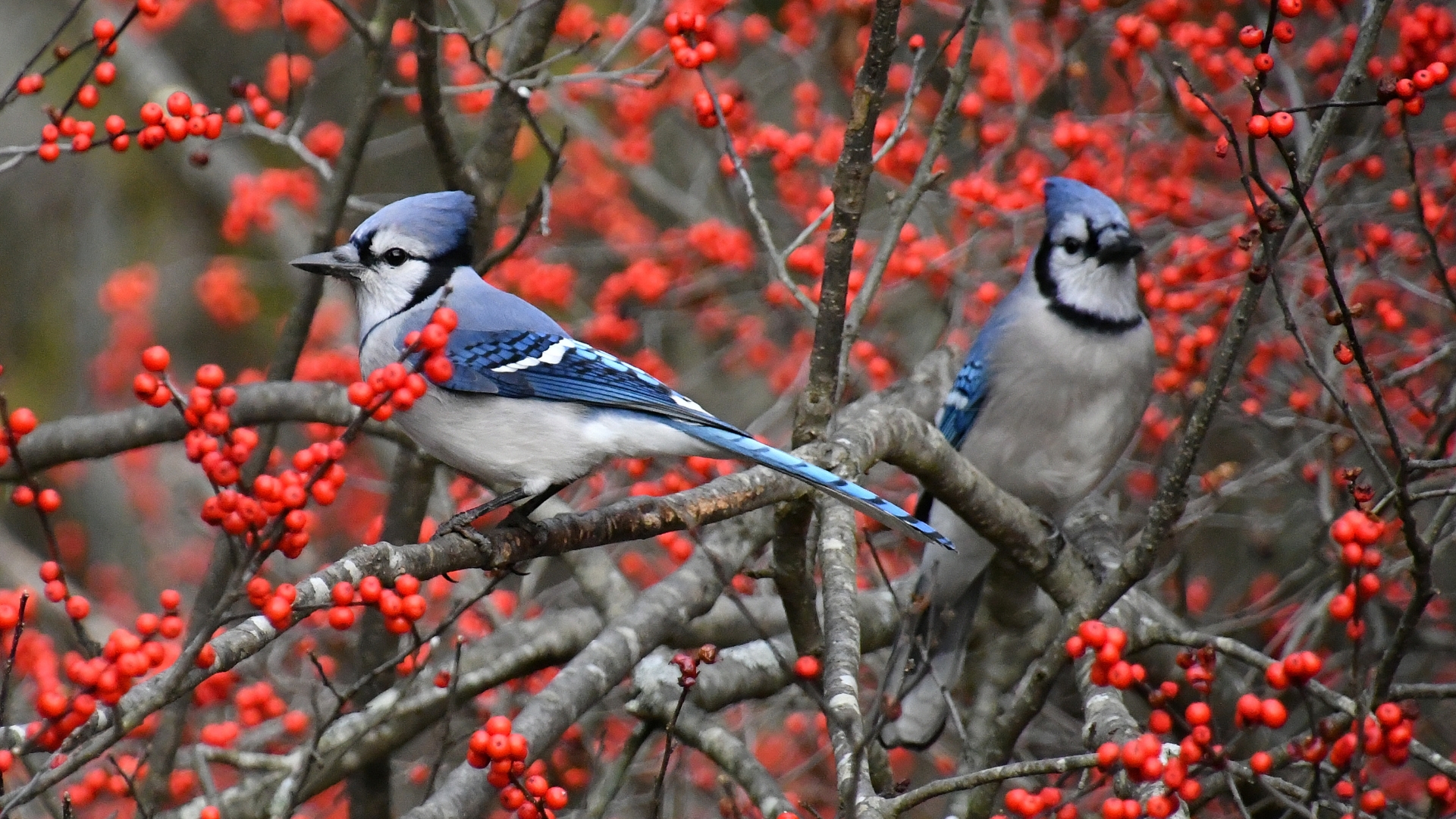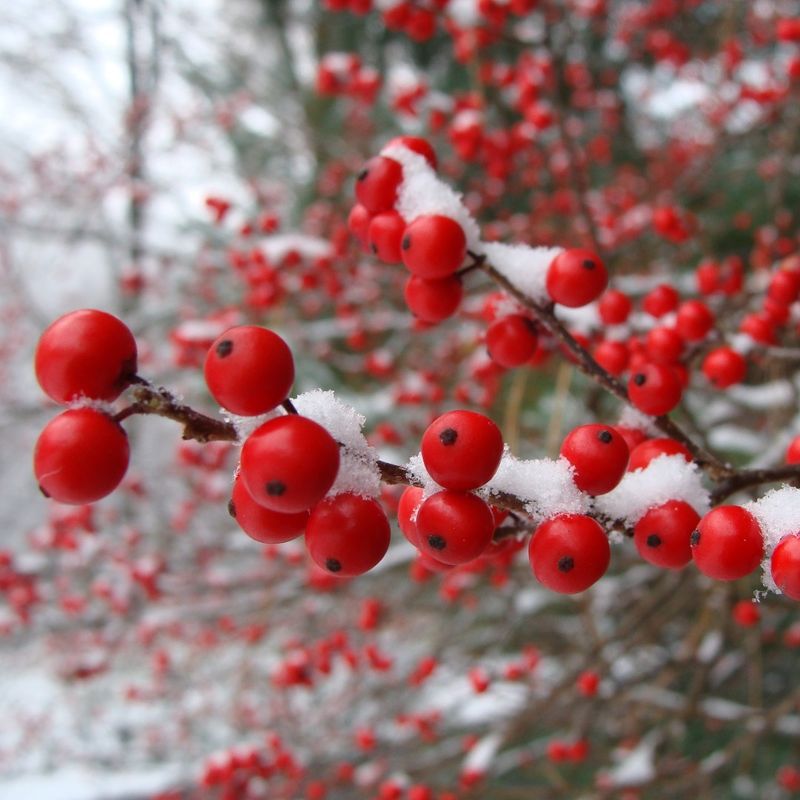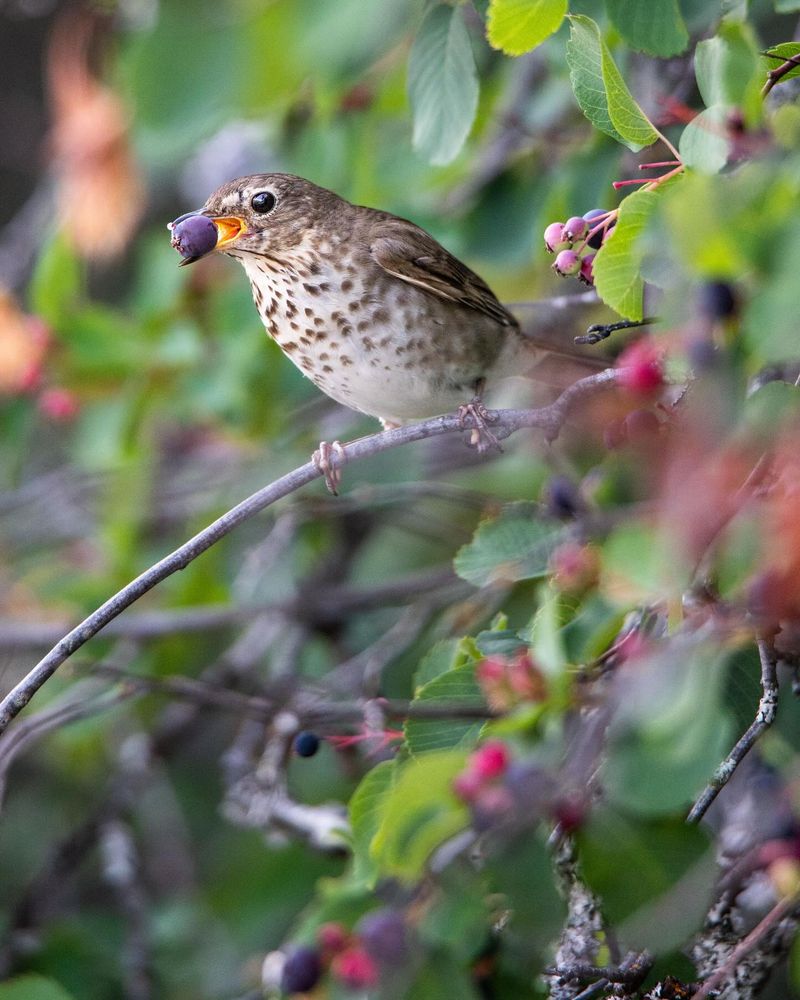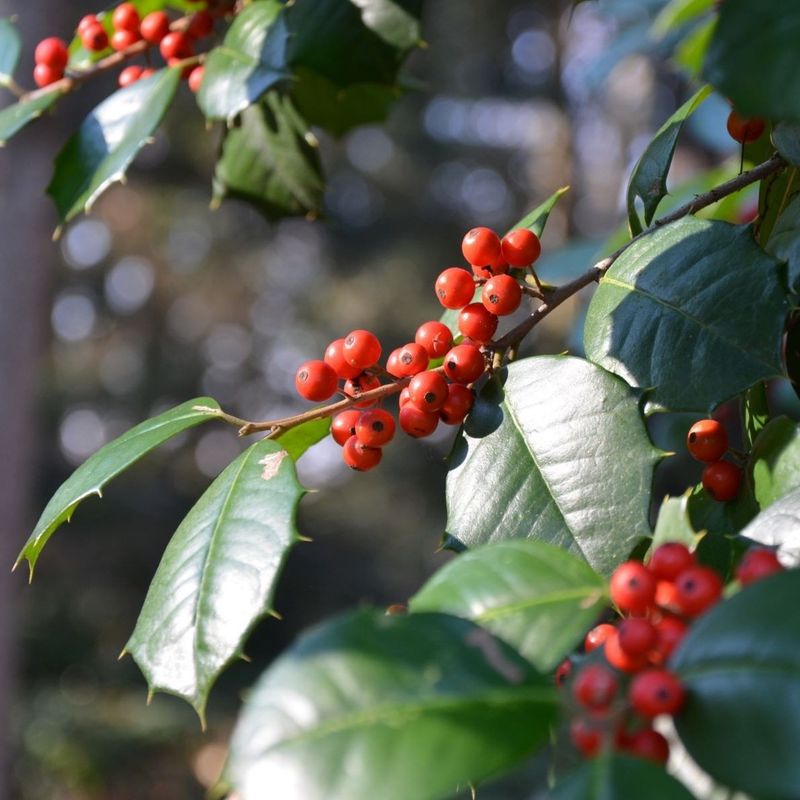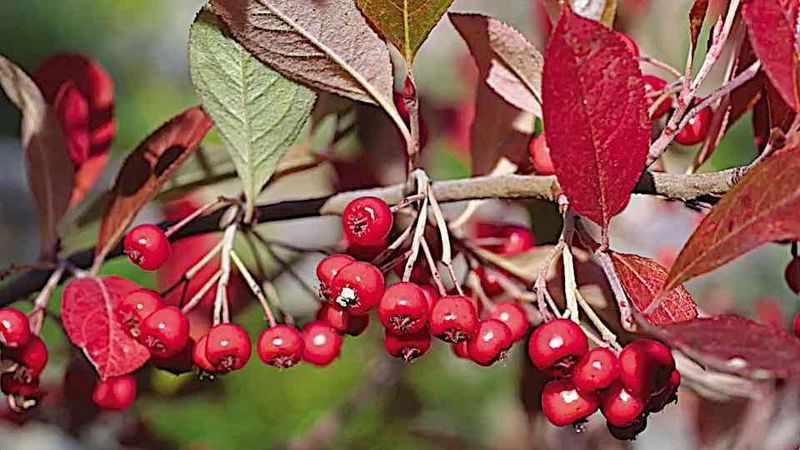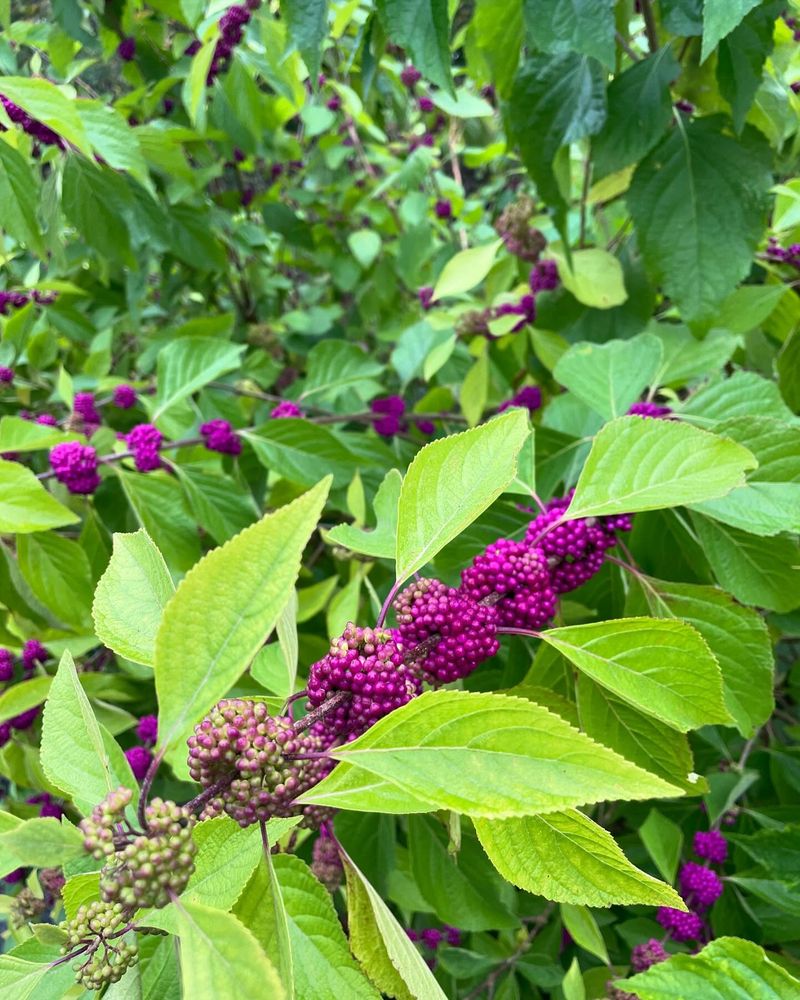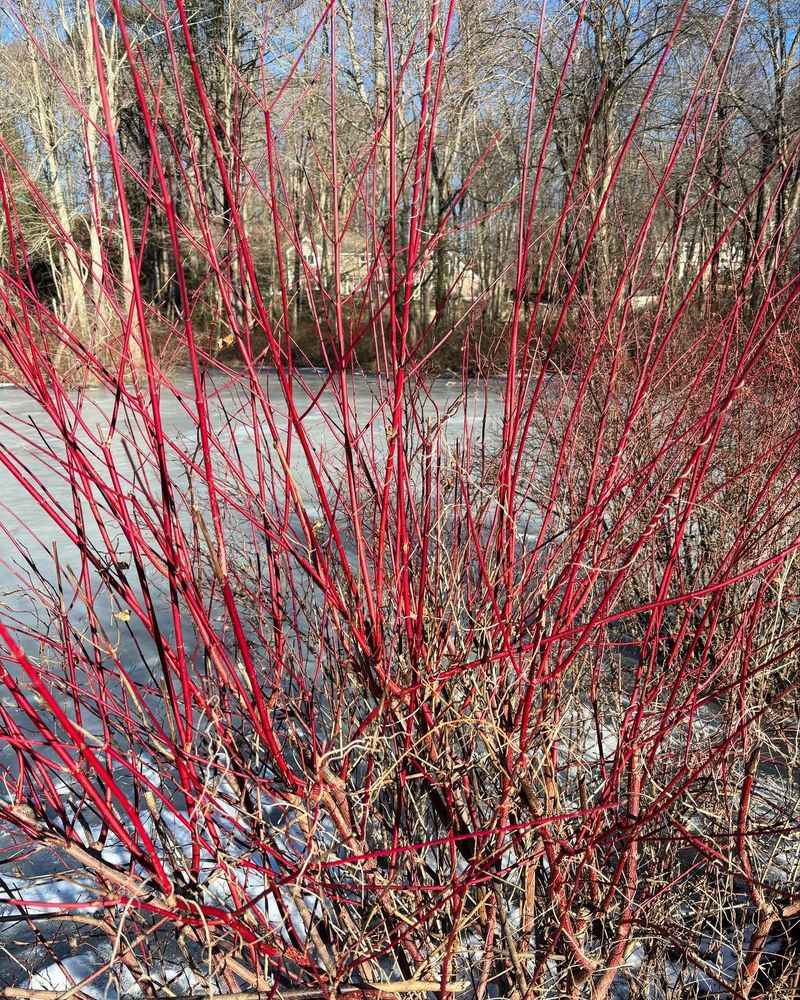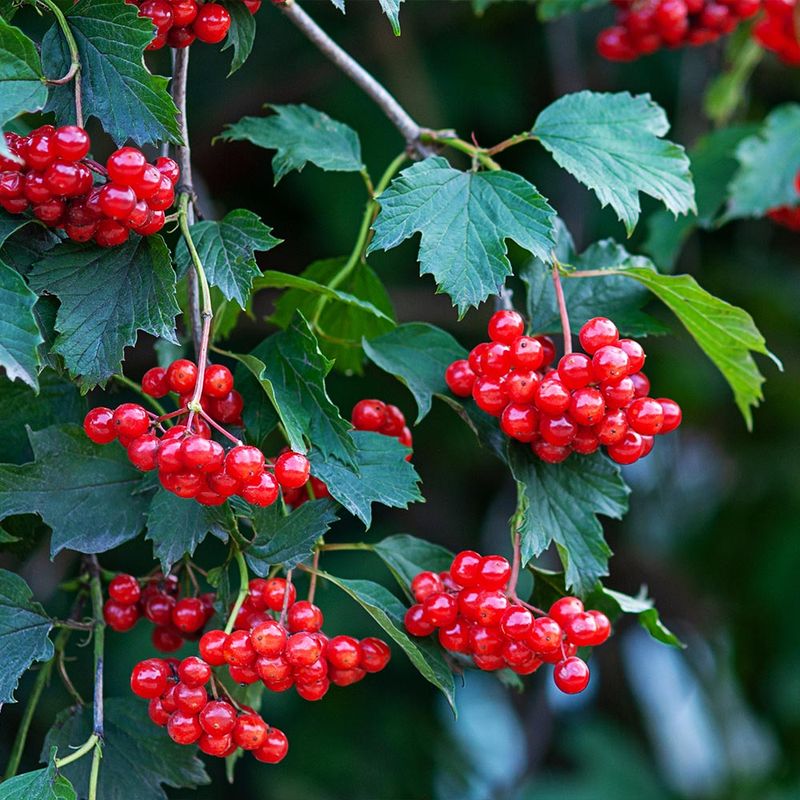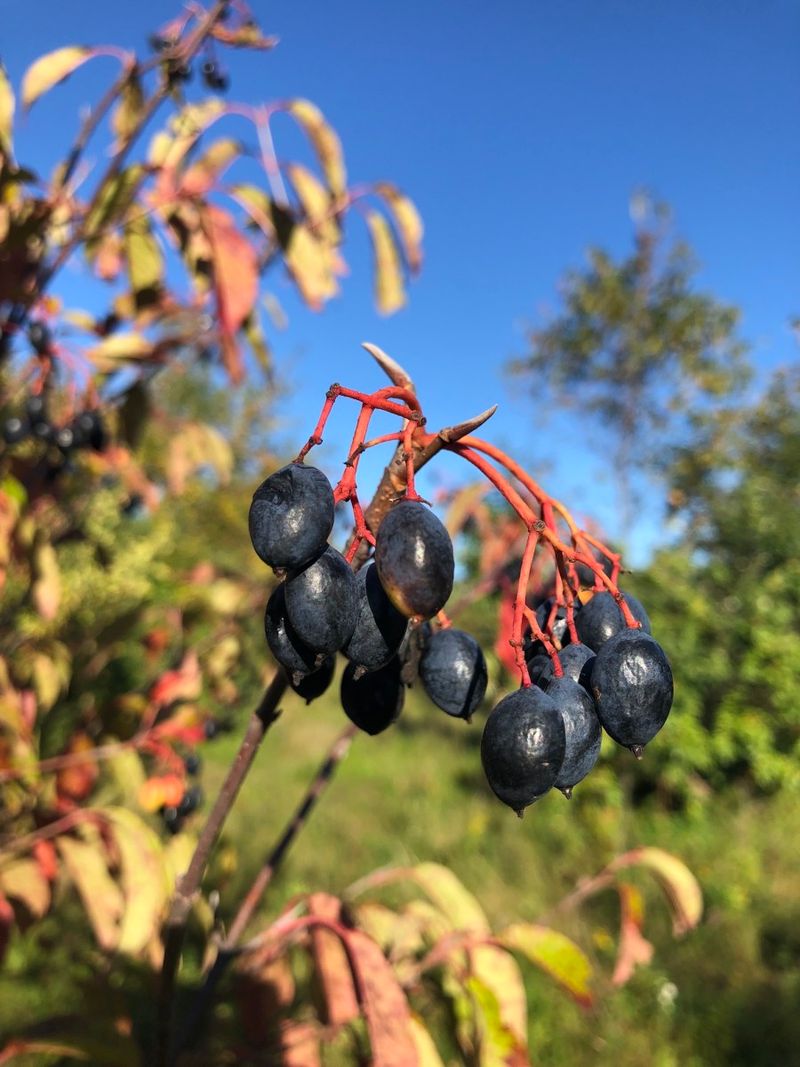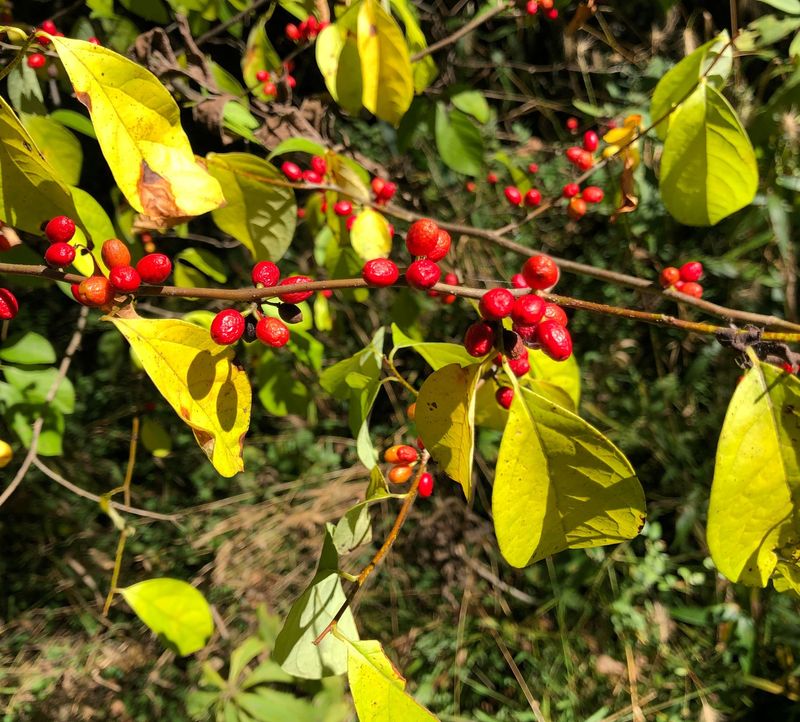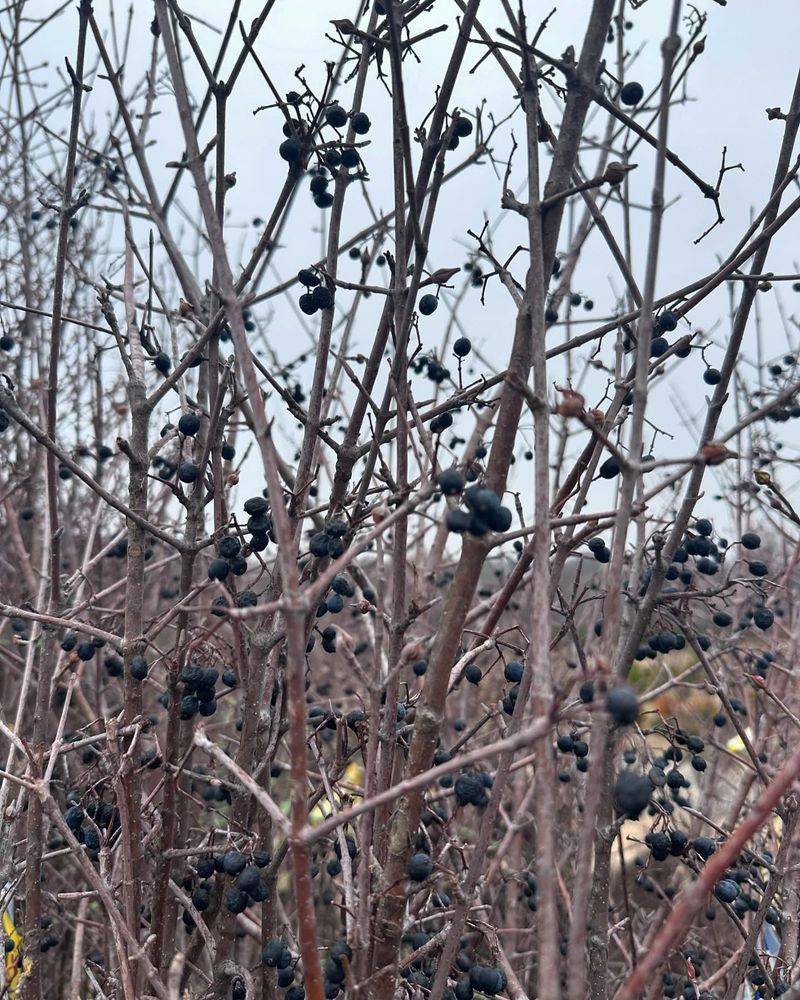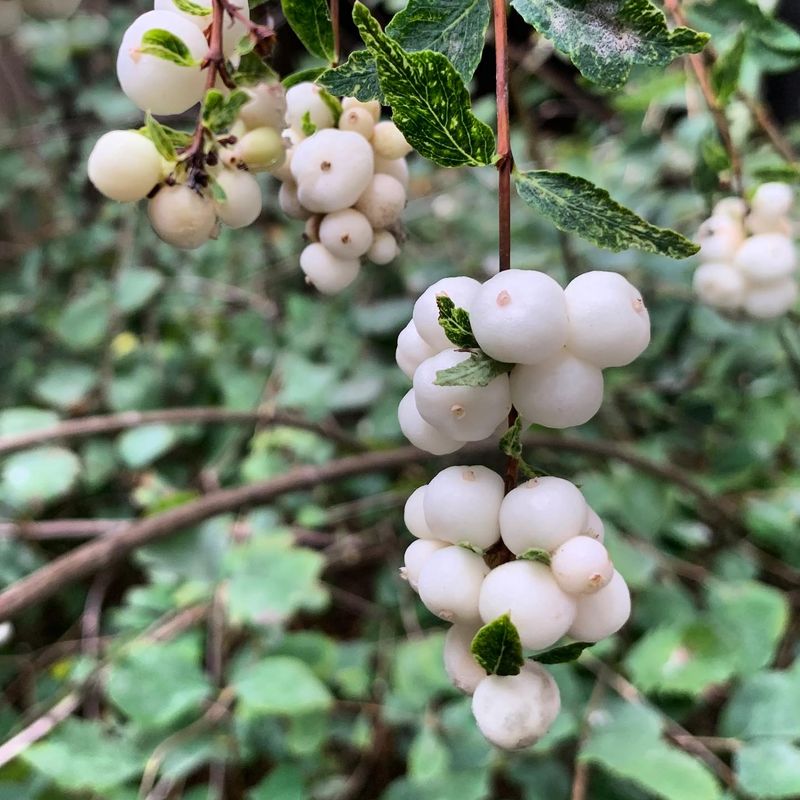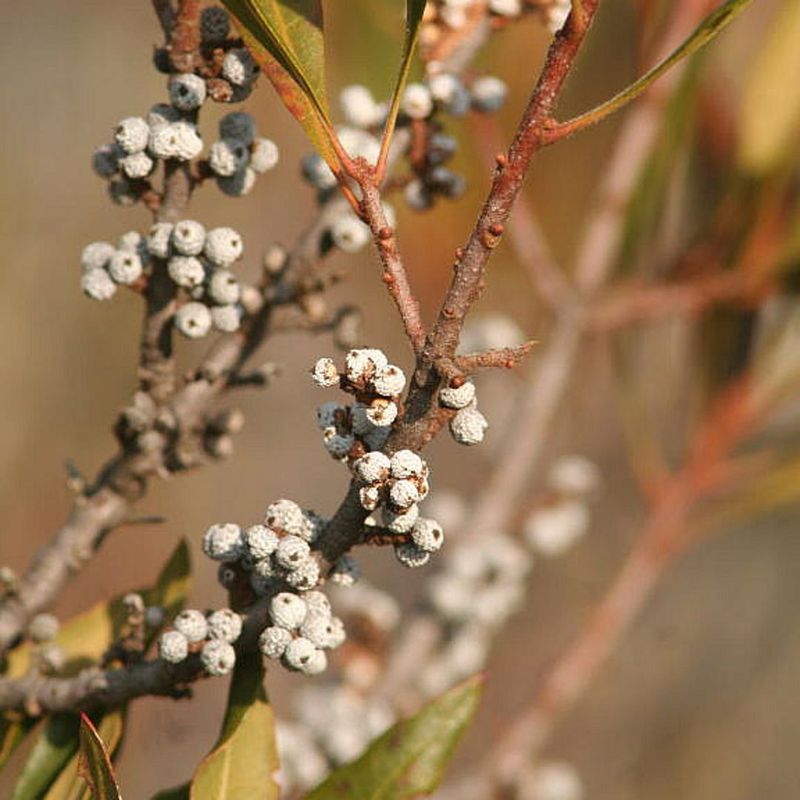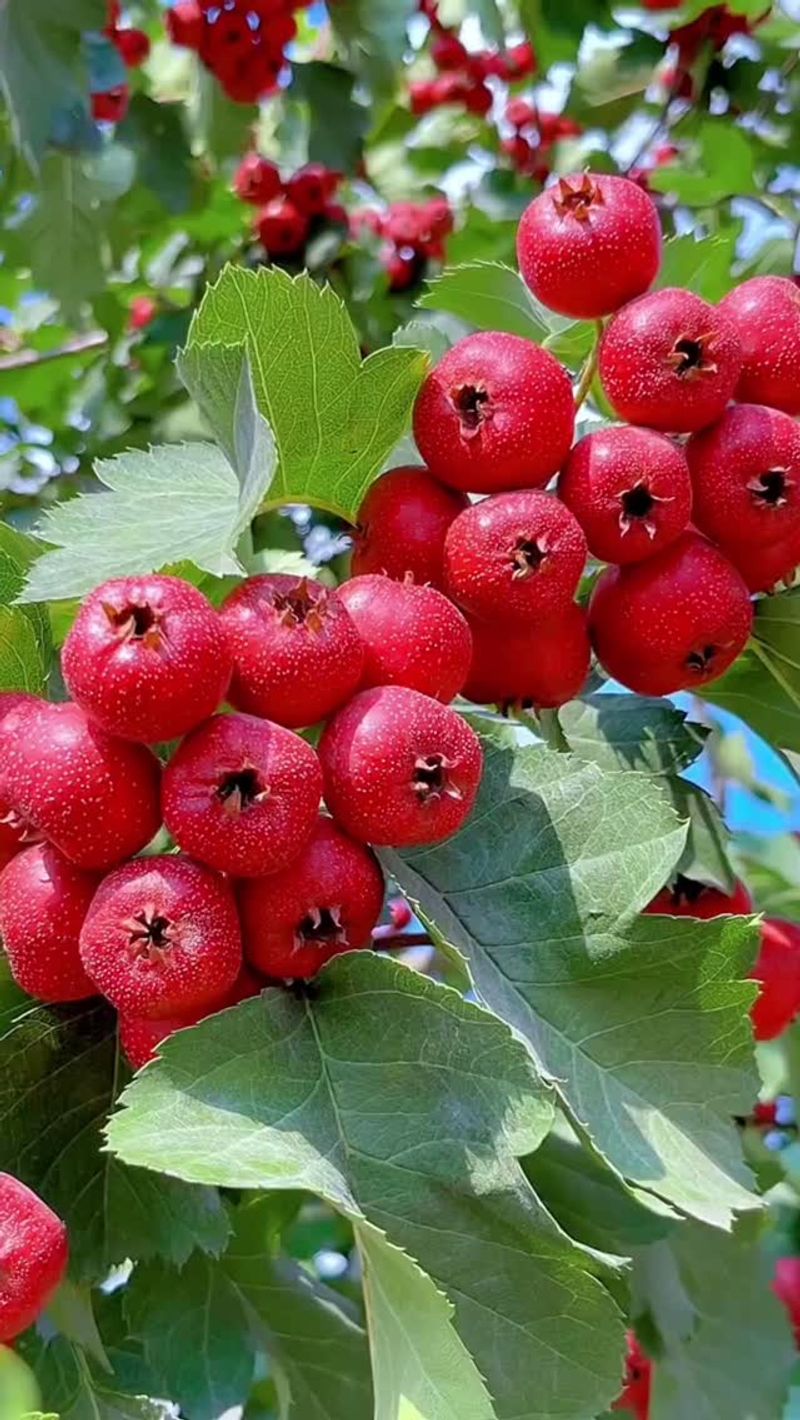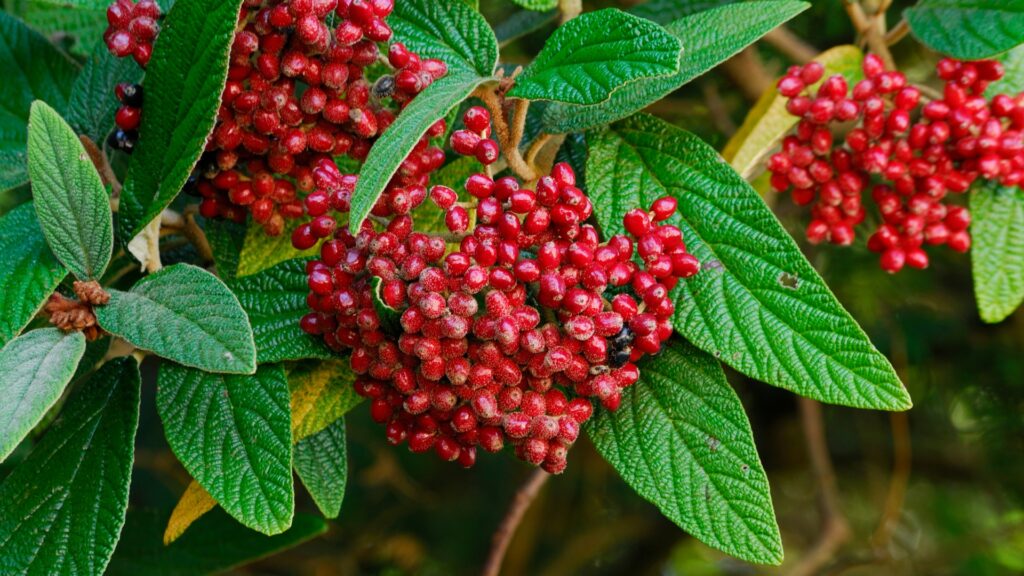Imagine a garden full of colorful shrubs with berries that not only look beautiful but also provide food for wildlife. These plants offer a safe haven for birds and small animals, helping them thrive. Let’s explore some wonderful shrubs that bring life and joy to any garden.
1. Winterberry
In the heart of winter, winterberry shrubs steal the show with their bold red berries. These berries are a crucial winter food source for many bird species when other options are scarce.
Their ability to thrive in wet conditions makes them versatile garden additions. The striking contrast of red against snowy backgrounds creates a picturesque winter scene.
Planting winterberry is like setting up a buffet for wildlife during colder months, ensuring your garden stays lively and animated even in frost.
2. Serviceberry
Serviceberry bushes offer a delightful treat with their sweet, juicy berries. Birds flock to these bushes, eager to enjoy the feast. The white flowers appear in early spring, attracting pollinators and beautifying the landscape.
As the flowers transform into berries, the bush becomes a hub of wildlife activity. Having a serviceberry in your garden means enjoying the melody of nature, with chirping birds and buzzing bees.
Serviceberry is sometimes called “Juneberry” because its fruits ripen in early summer.
3. Holly
Nothing says winter like holly bushes, decked out in shiny leaves and festive red berries. The berries are a favorite among birds, providing essential nourishment during winter.
These evergreen shrubs also offer excellent cover and nesting spots. The vivid color and spiky leaves make holly a standout in any garden.
By planting holly, you’re not only contributing to wildlife welfare but also adding a classic touch to your garden’s winter charm.
4. Chokeberry
Chokeberry bushes are a fantastic addition to any wildlife-friendly garden. Their tart berries are eagerly consumed by birds, aiding in their survival through harsh seasons.
The foliage turns stunning shades of red and orange in fall, adding to the garden’s aesthetic appeal. Resilient and adaptable, chokeberries do well in various soil types. Incorporating chokeberry into your garden means offering a seasonal bounty for wildlife while enjoying a splash of autumn color.
Despite their name, chokeberries are safe for human consumption too, often used in jams.
5. Beautyberry
With their dazzling purple berries, beautyberry shrubs add unexpected color to the landscape. These berries are a magnet for birds, ensuring your garden is always buzzing with activity.
The lush green leaves create a perfect backdrop for the vivid berries. Easy to grow, beautyberries thrive in various conditions, making them ideal for diverse landscapes.
Adding beautyberry to your garden not only supports wildlife but also introduces a pop of color that lasts into late fall. Did you know? Beautyberry leaves are sometimes used as a natural mosquito repellent.
6. Red Osier Dogwood
Red osier dogwood is known for its bright red stems, which are especially striking in winter. Birds feast on its small white berries, grateful for the sustenance in colder months.
This shrub’s vibrant stems stand out against the snow, creating a dramatic visual effect in the garden. Red osier dogwood thrives in wet soils, making it perfect for areas near water.
Not only does it support wildlife, but it also adds a unique, bold element to your landscape’s winter palette.
7. American Cranberrybush
The American cranberrybush boasts vibrant red berries that bring life to any garden. Birds are particularly drawn to these berries, relishing the nutritious snack.
The lush green foliage turns a beautiful hue in fall, enhancing the visual appeal. This shrub thrives in various conditions, making it a versatile choice for gardeners.
Planting an American cranberrybush ensures a steady stream of wildlife visits, all while adding a splash of color to your outdoor space.
8. Nannyberry
Beloved for their deep blue-black berries, nannyberry shrubs are a garden staple. Birds find the berries irresistible, often visiting these shrubs for a tasty treat.
The glossy green leaves provide a lush backdrop, while the shrub’s adaptable nature makes it suitable for various settings. In autumn, the leaves turn a showy red, adding seasonal beauty. Including nannyberry in your garden not only benefits wildlife but also brings dynamic color changes throughout the year.
Nannyberry is related to the honeysuckle family, known for its sweet-smelling flowers.
9. Elder
Elder shrubs offer a feast with their dark purple berries and creamy white flowers. Birds adore the berries, flocking to these shrubs for a nutritious meal.
The flowers appear in late spring, attracting pollinators and adding a fresh fragrance to the garden. Elder shrubs are versatile, thriving in various conditions and supporting diverse wildlife.
Planting elder means witnessing a bustling hub of activity, with birds, bees, and butterflies all around.
10. Spicebush
Spicebushes bring a spicy aroma to any garden. Their red berries are a favorite among birds, ensuring regular visits from feathered friends.
The leaves, when crushed, release a delightful scent, adding to their charm. Spicebush thrives in shaded areas, making it perfect for woodland gardens. Planting spicebush means enjoying both the visual appeal and the aromatic experience it brings.
Spicebush leaves and berries were traditionally used by Native Americans for medicinal purposes.
11. Blackhaw Viburnum
Dark berries on blackhaw viburnum make it a favorite among birds and a versatile shrub in the landscape. These shrubs thrive in diverse conditions, offering berries and shelter for wildlife.
The leaves turn a striking yellow in fall, adding a burst of color to your garden. Blackhaw viburnum’s adaptability makes it a favorite among gardeners looking to support wildlife and enhance their landscape’s beauty.
Did you know? Blackhaw wood was traditionally used to make tool handles due to its strength and durability.
12. Snowberry
Snowberry bushes add a unique touch with their white berries. Birds enjoy these berries, flocking to them throughout the colder months.
The dense foliage provides excellent cover, encouraging nesting activity. Snowberry is hardy and tolerant of various conditions, making it a reliable choice for many gardens.
Planting snowberry means offering essential resources for wildlife while enjoying a distinctive and charming plant.
13. Bayberry
Aromatic leaves and waxy berries make bayberry shrubs a bird-friendly addition to your landscape. These berries are an important food source during winter, and the leaves add a pleasant fragrance to the garden.
Bayberries thrive in sandy soils, often found in coastal areas, making them ideal for beachside gardens. By planting bayberry, you’re not only providing for wildlife but also enhancing your garden with a touch of scent and coastal charm.
14. Hawthorn
Hawthorn trees are a staple for wildlife, offering bright red berries that birds adore. The dense foliage and thorny branches provide excellent shelter and nesting sites.
With beautiful white flowers in spring, hawthorn adds seasonal interest to any landscape. These trees are resilient, thriving in various soil types and conditions.
By incorporating hawthorn into your garden, you’re supporting wildlife and enjoying a tree that offers beauty and protection all year round.
15. Viburnum ‘Emerald Carousel’
With clusters of deep blue-black berries, viburnum ‘Emerald Carousel’ is a wildlife favorite. The berries are loved by birds, offering a nutritious snack as the season transitions.
This shrub thrives in both sun and partial shade, making it a versatile addition to any landscape. In fall, the foliage turns a stunning red and purple, adding more visual appeal to your garden.
Planting viburnum ‘Emerald Carousel’ brings both beauty and life to your garden, supporting wildlife year-round.

